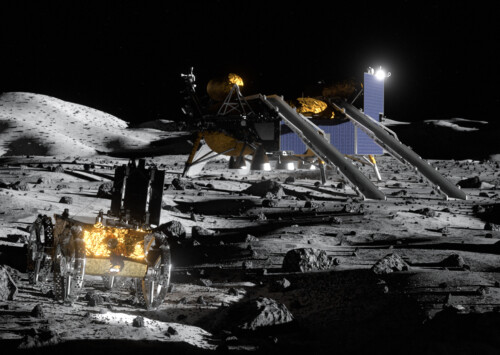The Jungle Book
 Released in India before Europe, Jon Favreau’s and Disney’s new adaptation of “The Jungle Book” delivers as promised – Mowgli and his squad in live 3D action and a whiff of nostalgia, darker and closer to Rudyard Kipling’s original tale published at the end of 19th century British India.
Released in India before Europe, Jon Favreau’s and Disney’s new adaptation of “The Jungle Book” delivers as promised – Mowgli and his squad in live 3D action and a whiff of nostalgia, darker and closer to Rudyard Kipling’s original tale published at the end of 19th century British India.
The mention of “The Jungle Book” brings nostalgia to viewers from all around the world who grew up with the Disney animated classic of 1967 or with one of the many other adaptations of this classic tale.
But “The Jungle book” has a much deeper story and is based on a collection of short stories by British writer Rudyard Kipling first published in 1894. The nostalgic Kipling, who was born and grew up in the British India, based his imagination on the jungles of Madhya Pradesh (central India) while he was writing the Jungle Book at Vermont in the United States.
Since its publication, the book has been muse to creative mediums such as comics, theatre, television and films – the first one being the 1942 live Technicolor extravaganza by Zoltan Korda – across the world and has drawn their attention to India in doing so. The names of the characters, the settings and the costumes of the human characters are a few of the elements that reflect India.
Moral lessons
Through different stories in the book, Kipling also tried to give moral lessons, based on the political situation of India during the time. It is, therefore, knowing its significance in India, that the film was released on April 8, only four days after its US opening and ahead of the European release. And the excitement of the Indian audience is evident in the fact that the weekend shows have been full house.
The plot is faithful to Kipling’s somehow entertaining but also dark imagination. Mowgli (Neel Sethi) is a ten-year-old man-cub, who is raised amidst a pack of wolves. Found by Black Panther Bagheera (Ben Kingsley’s voice/Om Puri in the Hindi version) in the jungle as an infant, who hands it over to the wolves for safety, Mowgli knows Raksha (Lupita Nyong’o/Shefali Shah) as his mother and the leader of the pack Akela (Giancarlo Esposito/Rajesh Khattar).
The scarred tiger Shere Khan (Idris Elba/Nana Patekar), the hypnotic python Kaa (Scarlett Johansson/Priyanka Chopra) and of course the earing and lazy bear Baloo (Bill Murray/Irrfan Khan) or monkey king Louie (Christopher Walken and Bugs Bhargava) are all there. The film has broadly tried to stick to the book, to go back to the roots, and has only diluted with its originality at places.
A new dimension
Of the many film adaptations made at different times, complementing the imaginations of the makers and the technology of the period, Jon Favreau’s work too gives a new dimension to the story. While most of us remember most previous adaptations as happy and light, Favreau manages to add darkness and effortlessly so, thanks to his previous films such as “Iron Man”.
Through this, he also breaks the boundary of the genre as the film also gets scary at times such as when Mowgli gets parted with Bagheera and strolls in the dark forest alone or the fight sequence between Mowgli and Shere Khan at the end. The 3D effect, sudden movements and the dark forest add more horror. The scene with Shere Khan chasing Mowli through the small gaps between the branches also gives creeps to viewers.
Although heavy on visual effects with computer generated imageries (CGI) of the animal characters and the forest, Favreau has seamlessly blended with the live character of Mowgli played by Indian-origin American child actor Neel Sethi. The furs and the movements of Bagheera or the Baloo look too real for animation and Kipling’s description of the jungles of Madhya Pradesh in India has been reinforced well by the imagination of the director in his studio in Los Angeles.
An Indian-American revelation
The scale, animals, details and the realism of the forest, Favreau manages to show all through the sets in the studio. One of the key highlights, however, is the new Mowgli. While the audience has been used to the cuteness of the animated character from the Disney adaptation, Sethi fares to pull the rugged and rough sides as a result of living in a forest. At the same time he retains the innocence that comes with being uninfluenced by the society.
One of the high points is when Mowgli runs with firelight in his hand from the human settlement to Shere Khan covering the length of the forest and setting the forest on fire. Through the scene, Sethi displays strength, anger, revenge and conviction all at once.
However, Mowgli’s character was at its best due to the strong voice cast of the film that was done according to the characters in the book. Kingsley, like his strong and thoughtful personality, breathed the same to the character of Bagheera as required and Murray added vivaciousness and vitality to the character of Baloo. Elba, as Shere Khan, is mean, hateful and cruel and makes the character intolerable to the audience. Johansson as Kaa deserved more space for her seductive voice with which she hypnotises the audience.
The 3D, the characters and the visual narrative of Favreau add magic to the timeless story by Kipling letting the new generations discover a modern Mowgli.









